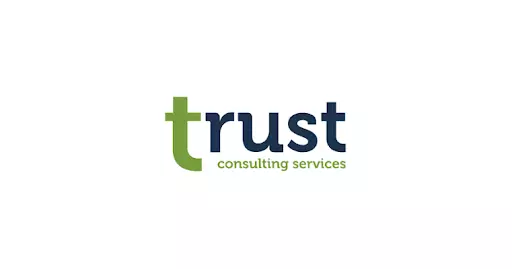News
Financial Reporting Fundamentals for Making Better Decisions

Financial reporting is fundamental to public disclosure and decision-making backed by knowledge. People can make informed decisions by supplying thorough knowledge on financial health—revenue, cost, final capital, and residual obligations.
Although it could appear complicated or boring, financial reporting is an essential skill since it helps companies track the finances of the whole business. The entity renders financial reports detailing various business operations transactions through this procedure. These are used to assess the firm’s status by its managers, investors, and analysts, who approve appropriate business decisions.
Understanding Financial Statements

The three primary financial reports are the key to understanding a company’s status and making reasonable business decisions. Each sentence fulfills a particular role and details a business’s economic situation.
1. Balance Sheet: With this explanation, a company would share its financial condition at a given point in time. It reveals all assets the firm owns, all liabilities it owes, and the equity of the shareholders, which is the owner’s claim on assets after paying all liabilities. The balance sheet is significant for determining the liquidity and financial stability of the firm, providing a picture of how well it can meet its obligations both in the short term and in the long term.
2. Income Statement: The income statement, also called the earnings statement, shows how much money a company earned in a given period, such as a quarter or a year, by subtracting the expenses from the revenues. This statement becomes the basis for assessing the company’s operational performance and profitability. It reveals a business earning capacity from operations and the areas with cost-cutting as the improvement of financial performance.
3. Cash Flow Statement: The cash flow statement implies that funds are coming in and out of the company during a timeframe. It is split into cash from operations, investments, and financing activities. The cash flow statement is among the very important components of understanding the company’s cash-paying ability, helping reveal how well the company generates cash to fund its operating and financial expenses.
Importance of Accurate and Reliable Financial Statements
Importance of Accurate and Reliable Financial Statements

The balance sheet, income statement, and cash flow statement represent the information needed to assess a company’s financial condition. Honesty and truthfulness in these statements are essential for effective decision-making and ensuring the company field is sustainable and profitable.
Precision and accuracy in preparing financial statements must be the basis for decision-making. They provide a truthful and comprehensive view of the economic status of a company, which is essential for:
Internal Management: The managers prefer to use exact financial figures to make suitable investments, budgets, and resource allocations. Reliable financial statements help investors and creditors consider the company’s performance and form their strategies for further development.
Investor Confidence: Investors and lenders refer to these statements to gauge the business’s ability to pay them and the credit terms. Pertinent messages positively influence investor perceptions, which contributes to attracting more capital.
Regulatory Compliance: Accounting accuracy guarantees conformity with an accounting standard and regulation. Therefore, it protects the company from legal charges and reputation damage.
Overall Transparency: The more accurate the financial statements, the more they help the enterprise be transparent. The business community of stakeholders, including the shareholders, creditors, and market analysts, will like and rely on them for their decision-making.
The Process of Data Analysis for Financial Reporting

Data analysis in financial reporting involves several essential steps that transform raw data into actionable insights. Here’s a detailed breakdown of each step highlighting key aspects:
1. Data Collection: A fundamental part of financial data analysis is data collecting, where transactions from different business activities, financial statements, and related documents are considered. The quality and completeness of the data should be addressed because the accuracy of the subsequent analysis directly depends on this data.
2. Data Cleaning and Preparation: The moment the data is collected, it is subject to cleaning and preparation. This crucial step filters out irrelevant data, inaccuracies, and duplicates that may affect the analysis results. Standardizing the data format also ensures consistency across different sources and periods, facilitating more accurate analysis.
3. Data Input and Storage: The data is input into financial analysis software or databases after cleaning and preparation. This step is vital for easy access and manipulation during the analysis phase. It’s also critical to ensure the data is stored securely to protect sensitive financial information.
4. Analysis: The core of financial data analysis involves applying various analytical techniques. Horizontal and vertical analysis compare financial data across different periods and within the same period. Ratio Analysis calculates financial ratios like debt-to-equity and return on equity to assess performance and profitability. Trend Analysis identifies patterns in economic performance over time.
5. Generating Reports: The reports are target-oriented, each differently designed to meet the needs of various stakeholders. They provide details on financial status and performance metrics and have specific strategic recommendations.
6. Review and Revision: Before finalizing, these reports are reviewed by senior analysts or managers to ensure their accuracy and completeness. This may lead to revisions requiring additional analysis to clarify or expand certain areas.
7. Decision Making: Down the line, financial data analysis is significant because it is regardless of any organization’s decision-making. Top-level strategic elements are based on the findings of these reports as the foundation for executive and manager decisions, such as budget changes, investment opportunities, and business planning.
8. Feedback Loop: Given that cycling is the essential factor, the feedback loop is the last but not least of all. The emphasis here is on tracking the outcomes of the decisions based on the reports and then using the results for future data collection and evaluation purposes. This leads the system to the most helpful effect at the given time.
Such a structured solution will help organizations analyze financial data to fully exploit their power and make decisions leading to better economic growth.
Leveraging Business Intelligence Tools for Effective Reporting

Business intelligence (BI) refers to intelligent business technology that uses data collection, analysis, and reporting to provide information to decision-makers seeking to improve business performance. It plays a vital part in translating raw economic data into understandable conclusions.
Role of Business Intelligence in Financial Reporting
1. Enhanced Data Analysis: These BI tools can deal with data from diverse sources, including financial performance, customer data, and market trends. These instruments utilize a modernized analytics approach to process and analyze such data, producing more penetrating information than the original economic.
2. Real-Time Reporting: Unlike most historical data-focused financial reporting techniques, business intelligence (BI) technology allows for on-the-spot data analysis. Thus, this is realized when the authorities always get what they want in time to react promptly to market changes and make informed decisions faster.
3. Improved Data Visualization: Through data visualization, BI tools excel, making intricate financial reports and displaying them intuitively (such as dashboards, graphs, and charts). This visualization provides stakeholders who may need more time to digest extensive reports with figures and tables with a quick, deep understanding of what is happening.
4. Predictive Analysis: Business intelligence systems use predictive analytics to analyze past and present data and forecast capability. This is a function of past data and its utilization in projecting future trends, which can be helpful when businesses need to anticipate market changes, manage risks, and allocate resources more efficiently.
5. Strategic Decision Making: Through a life cycle of extensive analyses and forecasts with valuable insights, BI helps leaders make smart opportunities that will achieve the company’s goals. This comparative advantage must be sustained to enable a company to remain competitive and maintain the desired business growth.
Overall, business intelligence revolutionizes financial reporting by providing more depth, accuracy, and timeliness in the insights delivered, ultimately fostering a data-driven culture that enhances strategic decision-making across the organization.
Popular BI Tools and Their Functionalities
Business intelligence (BI) tools are essential for organizations looking to make informed decisions based on data analysis. These tools help collect, process, and analyze large volumes of data, transforming them into actionable insights. Here are some popular BI tools and their key functionalities:
1. Tableau

Tableau is renowned for its powerful data visualization capabilities. It allows users to create interactive and shareable dashboards highlighting the data’s trends, variations, and density in graphical form.
Tableau can connect to live data sources, enabling real-time analysis and reporting. This feature is handy for dynamic environments where conditions change rapidly. Designed to focus on user experience, Tableau supports drag-and-drop functionalities that make it accessible to users without extensive technical skills.
2. Microsoft Power BI

Power BI is closely connected with other Microsoft products like Excel and Azure, so it is an obvious choice for organizations heavily invested in Microsoft technologies. Users can build personalized dashboards and reports that make data consumption simple and possible through various devices and platforms.
Power BI supports other advanced analysis procedures, such as predictive and machine learning, to allow organizations to forecast or predict future responses and behaviors.
3. QlikView

QlikView uses a rule-based engine that applies to different use cases and involves user queries and tasks. It allows data from different systems to fuse without additional effort and can perform multiple transformations on data before exporting the aggregated view to the user.
It can scale to accommodate various enterprise sizes, from small to large, and adapt to varying data sizes and user numbers.
4. SAP BusinessObjects

SAP BusinessObjects offers numerous report-generation facilities, including standard reports, ad-hoc reports, and dynamic visualization dashboards. In addition, it encompasses data warehousing tools that companies can use to manage data and format it among different servers efficiently.
The tool offers excellent flexibility regarding access control, allowing administrators to manage permissions and security settings effectively.
5. IBM Cognos Analytics

Cognos leverages AI to automate data preparation, produce insights, and identify various graphical displays, enhancing the quality of the analysis. This architecture provides a scalable environment that caters to the data needs of small teams and big enterprises, accommodating high volumes of data.
Cognos provides collaboration tools that ensure teams collaborate on the design and analysis of reports and dashboards.
These BI tools have a broad range of functions centered on having organizations make better decisions, up their operations, and manage growth depending on the available data. Every tool is one of a kind, which explains the vitality of the right selection and, at the same time, about an organization’s existing infrastructure.
Wrapping Up
In this regard, we discussed how cybersecurity is a barrier against cyber threats and protecting confidential data. Risk management emerged as the core of the whole process, helping align the cybersecurity strategy with the compliance framework and thus enabling the organization to respond to and manage the threats properly. Engineering is the process of formulating security plans that will be deeply integrated into other defense plans to ensure that systems remain resilient.
The growth in the complexity of cyber risks and the proliferation of oversight regulatory provisions make it critical for companies to focus on financial reporting and analysis. Vigorous financial reporting is a policy obligation and a resourceful management tool that can inform decision-making and provide for strategic planning.
Practical and detailed financial analysis reveals a company’s financial position, allows for performance improvement, and predicts future trends.
We suggest our readers keep current with the world of cybersecurity, risk management, and engineering, be aware of the latest developments in these fields, and actively invest in self-improvement through improving their financial analysis skills. Hence, you will have the power to make the right decisions, maximize benefits, and lower risks, which must be considered when doing business in the modern world.
get the best consultation
Please complete the form below so we can direct your inquiry to the right expert.
Latest News
Transform Your Workplace with Superior Facility Services
News Transform Your Workplace with...
Read MoreImprove Your Approach: Effective Management Solutions
News Improve Your Approach: Effective...
Read More

